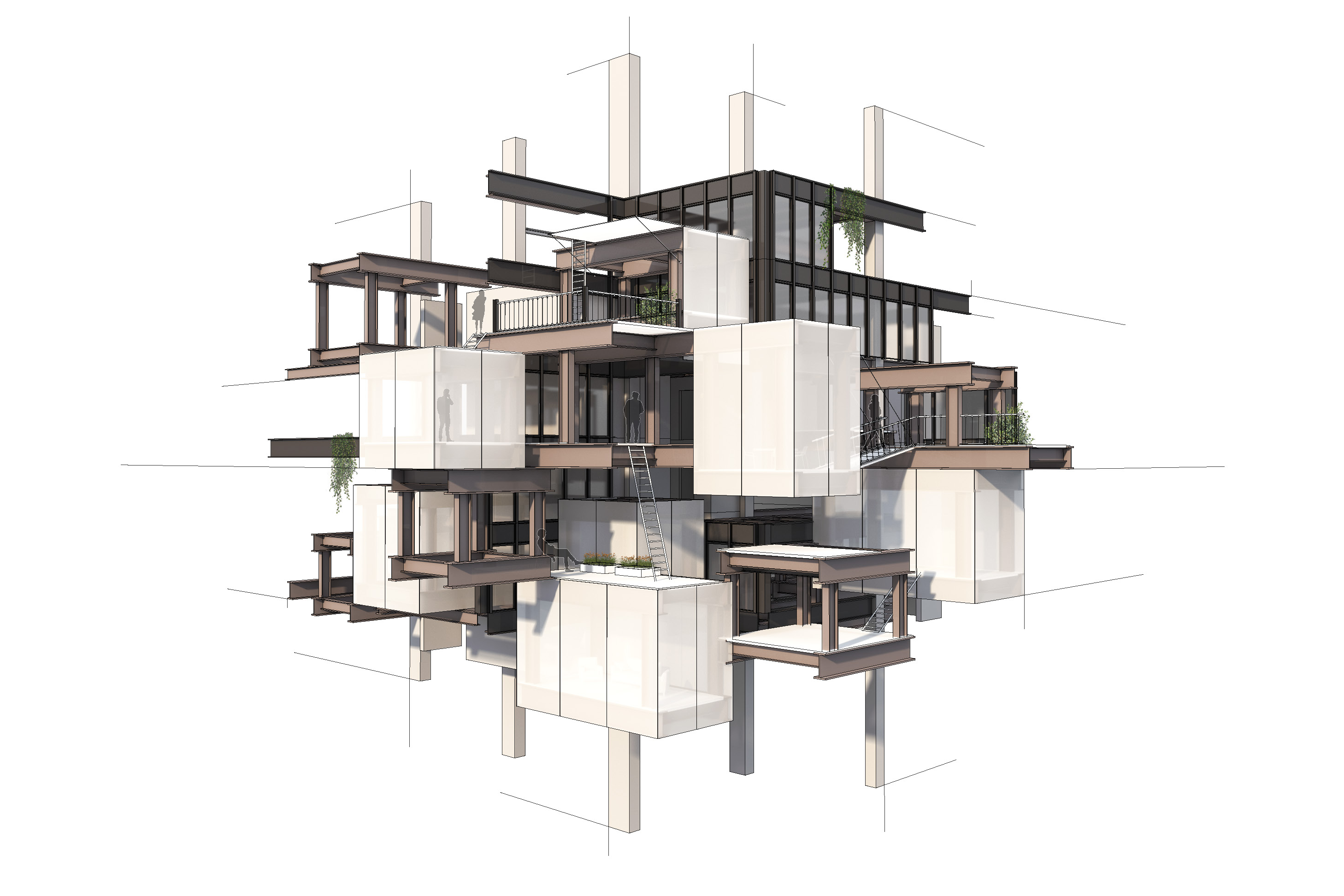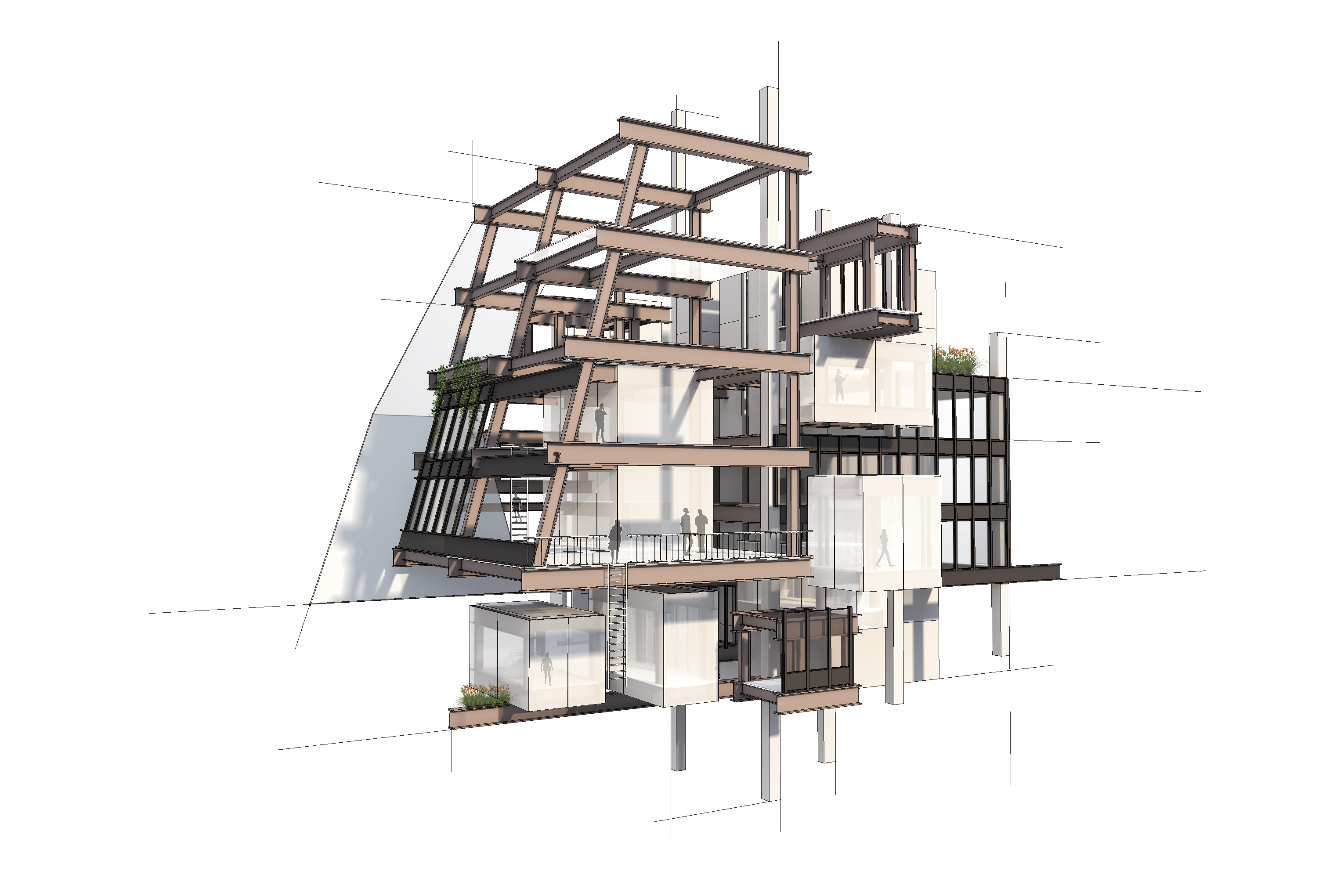Jack Hache & Meredith Davis
How will we Live Together?
![]()
How will we Live Together?
—
Re-Interpreting the Existing Workplace: The Seagram Building
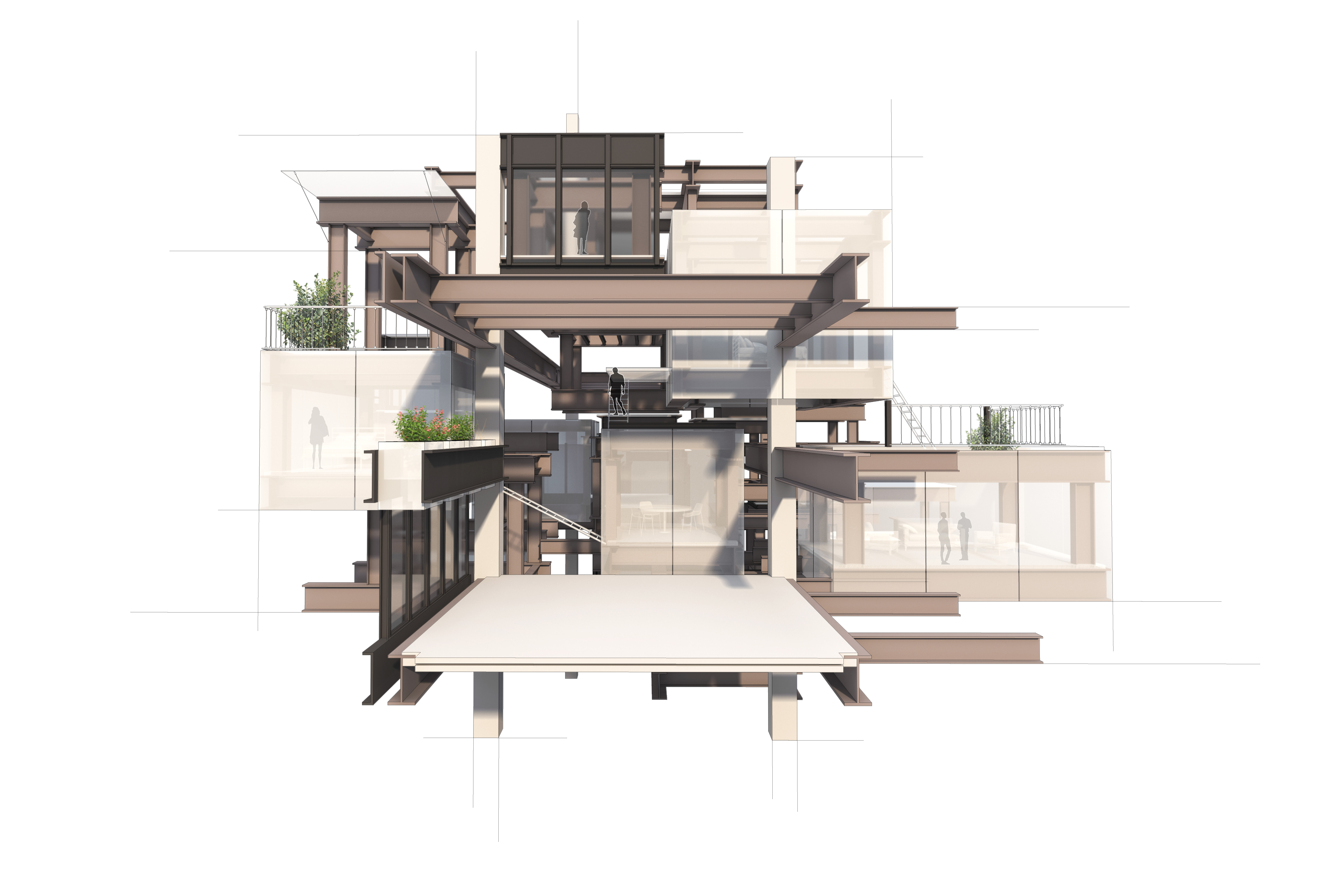
Re-Interpreting the Existing Workplace: The Seagram Building
With the COVID-19 pandemic and a growing work from home model, the typologies live, work and community have drastically shifted. Along with this shift, many office towers are predicted to be rendered obsolete. Cities have also experienced a loss of community. This project explores how potentially obsolete office towers can be repurposed to create a new typology that combines the home, work, and community.
As an icon of the modern office tower, Mies van der Rohe’s Seagram Building in New York was chosen for these explorations. The existing building was altered based on the guiding philosophy of “facilitating community through a multi-layered framework of exposure to the home, the work, and the
The guiding philosophy begins with circulation (as displayed in yellow), which provides a connection of people through exposure and spontaneous interaction. Bringing in the home (as displayed in red), this exposure connects residents and others passing through. The element of work (as displayed in blue) adds another layer of interaction to this framework. Lastly, the initial community path penetrates through the work and live layers. By creating layers of different use, privacy, and scale, there are both formal and informal areas where community can occur. This framework provides people with a means to grow and determine how live and work accordingly.
With the COVID-19 pandemic and a growing work from home model, the typologies live, work and community have drastically shifted. Along with this shift, many office towers are predicted to be rendered obsolete. Cities have also experienced a loss of community. This project explores how potentially obsolete office towers can be repurposed to create a new typology that combines the home, work, and community.
As an icon of the modern office tower, Mies van der Rohe’s Seagram Building in New York was chosen for these explorations. The existing building was altered based on the guiding philosophy of “facilitating community through a multi-layered framework of exposure to the home, the work, and the
The guiding philosophy begins with circulation (as displayed in yellow), which provides a connection of people through exposure and spontaneous interaction. Bringing in the home (as displayed in red), this exposure connects residents and others passing through. The element of work (as displayed in blue) adds another layer of interaction to this framework. Lastly, the initial community path penetrates through the work and live layers. By creating layers of different use, privacy, and scale, there are both formal and informal areas where community can occur. This framework provides people with a means to grow and determine how live and work accordingly.
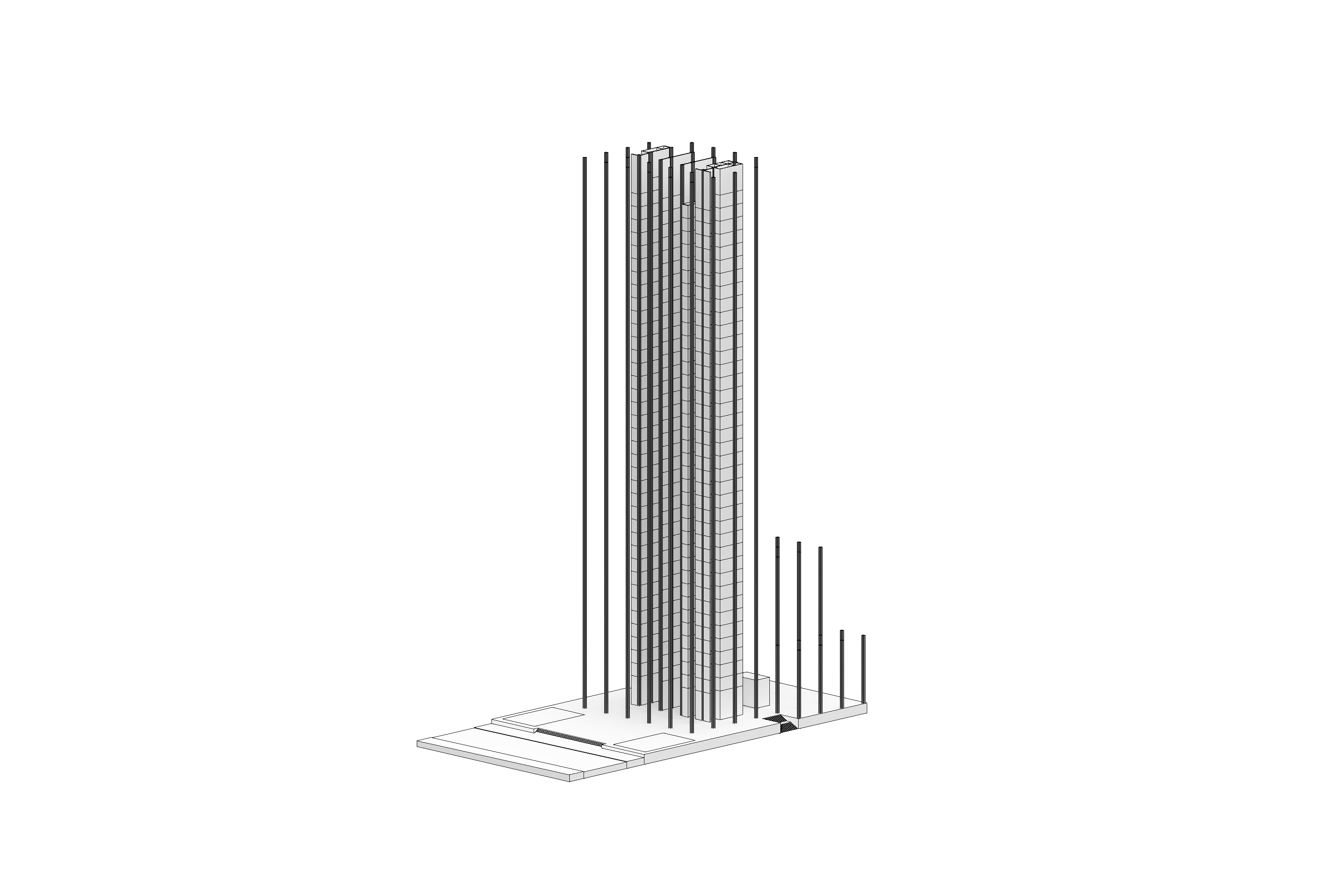


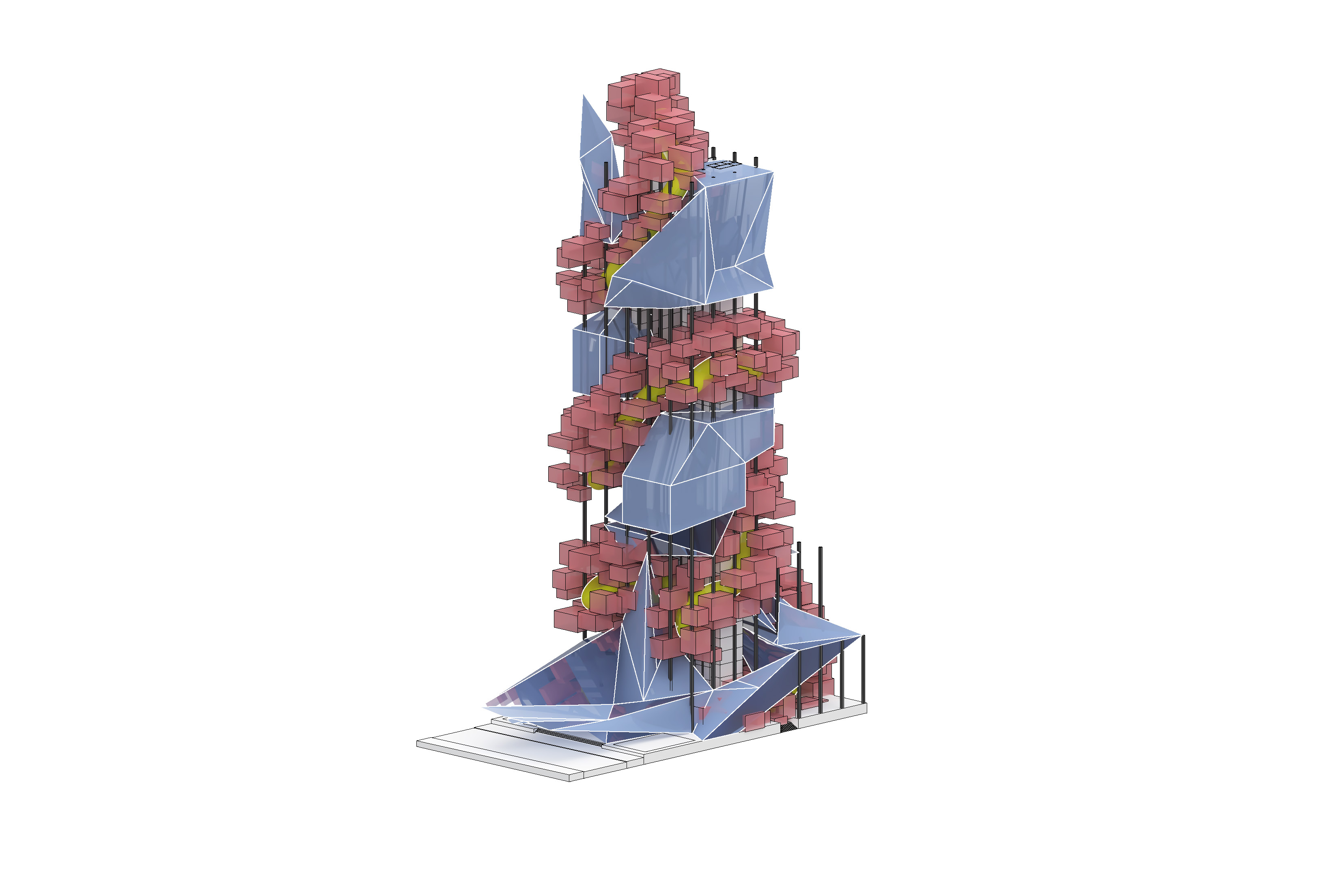

How can an existing office building - potentially obsolete - form a new relationship of live, work, and community?
